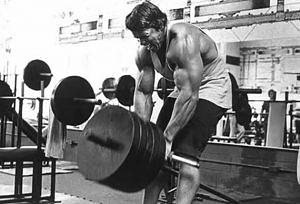You think you’re going to get weaker, smaller and fatter. But I’ve never seen this actually happen. I always see people come back stronger for it.
I know what we do isn’t a sport. For most, it’s an outlet and an anchor in their day to clear their minds and focus on themselves for an hour. But we’re still putting our bodies through hell, so we need to respect this and cycle our training accordingly.
Why Do Deloads Work?
What deloads allow your body to do in simple terms is dissipate residual fatigue that builds up over time in the body.
When you’re a beginner, the fatigue you accumulate is minimal as the loading isn’t high, your ability to tax the nervous system is low, and your recovery capacity is generally a lot higher.
As you progress, this fatigue becomes more prevalent so we need periods of ‘unmasking’ this so we can stay strong and healthy.
It’s a ‘1 step back, 2 steps forward’ approach that can reap real dividends when applied in the correct time and manner.
- Longer term strength progression
- Less injuries and niggles
- Healthier joints
- Better hormonal health
- Improved sex drive

When Should You Deload?
I’m not a huge fan of planned deloads for most people – unless I’ve worked with them for a long enough time to know when it’s best. For most clients, I try and get them in tune with their bodies and learn the feedback they should look out for to signal a deload may be in order.
The problem with planned deloads well in advance is you’re not going to know what your life stresses are going to be like at the time. You might plan it in every 4 weeks, but what if you’re killing it in the gym, super motivated and still making great progress? Are you still going to back off?
I think it makes sense for us (who aren’t competitive athletes) to ride the wave and try accommodate deloads with life itself, and when you need it. That being said, what we don’t want are ‘forced’ deloads, when injuries leave you with no choice. It should happen before this.
In my own personal training, I know I need some form of a deload when my hips and lower back become cranky no matter what I do, and I start to get mentally fried of ‘going’ to the gym. It’s usually my body’s way of saying it needs 3 to 5 days off completely, or at least a few days of reduced volume.
As you become more experienced though, you’ll find your intuition and personal experience will guide your deloads. But if you’re training hard, typically you’ll usually see this fall in the 6 to 8 week bracket.

How To Deload
During this ‘peak’ I like to cut volume, and push to set some repetition PRs. I know in the lead up to these weeks I’d have built up a fair amount of fatigue and I’m ready to back off a little.
For clients, this is the way I do it for many. I push them hard in the lead up to a holiday, and then tell them to back off when away with either no training at all, or just some bodyweight / light workouts if they want to do something, like those found here.
What To Do After A Deload
Do not go balls out in your first week back!
Conclusion
And no, deloading doesn’t make you a p*ssy. If you train hard, you’ll need it.

.jpg)
.jpg)
